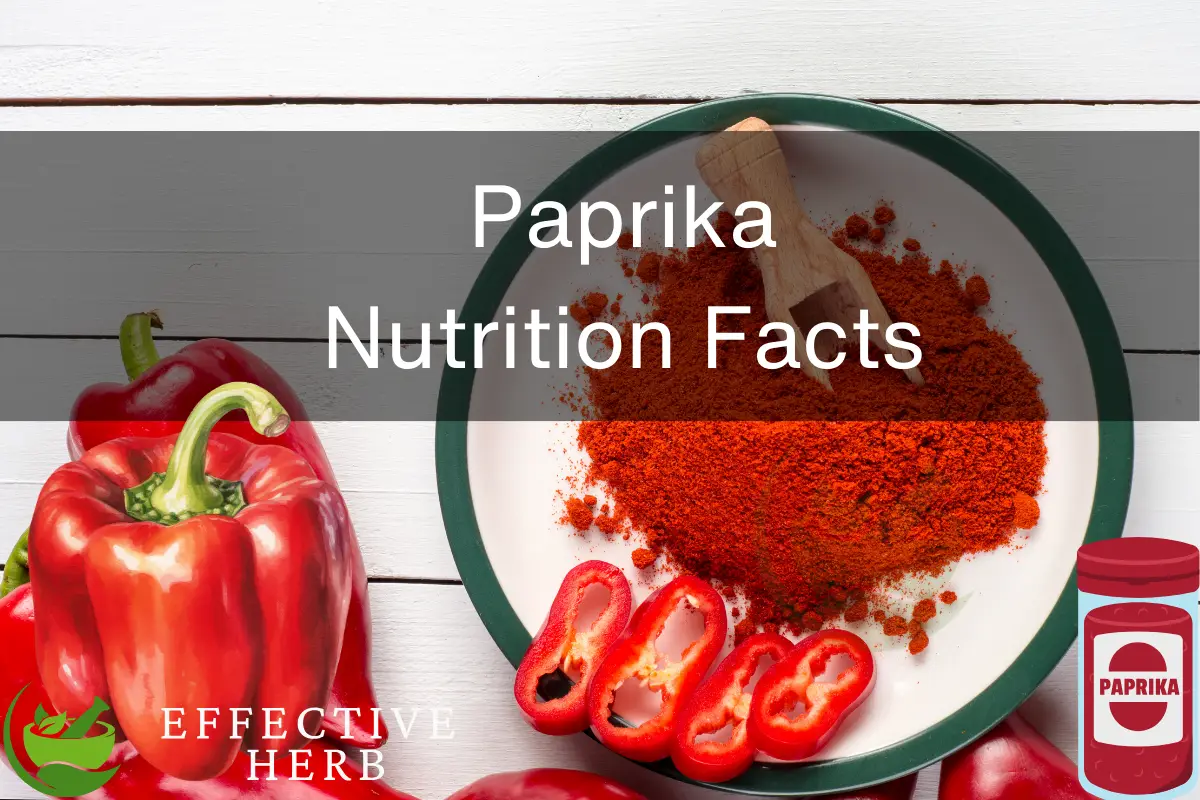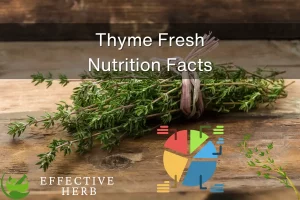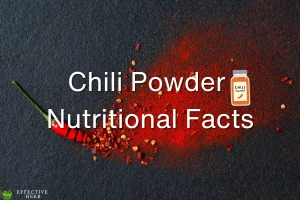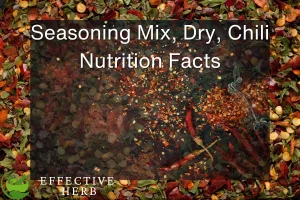Paprika Nutrition Facts
Paprika is a vibrant spice made from grinding dried red peppers. Beyond its use as a seasoning, paprika offers a range of health benefits due to its rich nutrient content. Packed with antioxidants like vitamin C and carotenoids, paprika can support overall health and well-being. Understanding the nutrient facts of paprika can help you incorporate this flavorful spice into your diet more consciously.
Full Nutrient Table
The values below are based on a 100-gram portion, showcasing the nutritional richness of paprika. Whether used in marinades, rubs, or as a garnish, paprika adds both color and a nutritional boost to your dishes.
| Name | amount | Unit |
|---|---|---|
| Proximates | ||
| Water | 11.2 | g |
| Energy | 282 | kcal |
| Energy | 1180 | kJ |
| Protein | 14.1 | g |
| Total lipid (fat) | 12.9 | g |
| Ash | 7.74 | g |
| Carbohydrates | ||
| Carbohydrate, by difference | 54 | g |
| Fiber, total dietary | 34.9 | g |
| Sugars, total including NLEA | 10.3 | g |
| Sucrose | 0.81 | g |
| Glucose | 2.63 | g |
| Fructose | 6.71 | g |
| Lactose | 0 | g |
| Maltose | 0 | g |
| Galactose | 0.19 | g |
| Minerals | ||
| Calcium, Ca | 229 | mg |
| Iron, Fe | 21.1 | mg |
| Magnesium, Mg | 178 | mg |
| Phosphorus, P | 314 | mg |
| Potassium, K | 2280 | mg |
| Sodium, Na | 68 | mg |
| Zinc, Zn | 4.33 | mg |
| Copper, Cu | 0.713 | mg |
| Manganese, Mn | 1.59 | mg |
| Selenium, Se | 6.3 | µg |
| Vitamins and Other Components | ||
| Vitamin C, total ascorbic acid | 0.9 | mg |
| Thiamin | 0.33 | mg |
| Riboflavin | 1.23 | mg |
| Niacin | 10.1 | mg |
| Pantothenic acid | 2.51 | mg |
| Vitamin B-6 | 2.14 | mg |
| Folate, total | 49 | µg |
| Folic acid | 0 | µg |
| Folate, food | 49 | µg |
| Folate, DFE | 49 | µg |
| Choline, total | 51.5 | mg |
| Betaine | 7.1 | mg |
| Vitamin B-12 | 0 | µg |
| Vitamin B-12, added | 0 | µg |
| Vitamin A, RAE | 2460 | µg |
| Retinol | 0 | µg |
| Carotene, beta | 26200 | µg |
| Carotene, alpha | 595 | µg |
| Cryptoxanthin, beta | 6190 | µg |
| Vitamin A, IU | 49300 | IU |
| Lycopene | 0 | µg |
| Lutein + zeaxanthin | 18900 | µg |
| Vitamin E (alpha-tocopherol) | 29.1 | mg |
| Vitamin E, added | 0 | mg |
| Tocopherol, beta | 0.35 | mg |
| Tocopherol, gamma | 3.54 | mg |
| Tocopherol, delta | 0.25 | mg |
| Tocotrienol, alpha | 3.95 | mg |
| Tocotrienol, beta | 0 | mg |
| Tocotrienol, gamma | 0.09 | mg |
| Tocotrienol, delta | 0 | mg |
| Vitamin D (D2 + D3), International Units | 0 | IU |
| Vitamin D (D2 + D3) | 0 | µg |
| Vitamin K (phylloquinone) | 80.3 | µg |
| Vitamin K (Dihydrophylloquinone) | 0 | µg |
| Lipids | ||
| Fatty acids, total saturated | 2.14 | g |
| SFA 4:0 | 0 | g |
| SFA 6:0 | 0 | g |
| SFA 8:0 | 0 | g |
| SFA 10:0 | 0 | g |
| SFA 12:0 | 0.068 | g |
| SFA 13:0 | 0 | g |
| SFA 14:0 | 0.172 | g |
| SFA 15:0 | 0 | g |
| SFA 16:0 | 1.47 | g |
| SFA 17:0 | 0 | g |
| SFA 18:0 | 0.337 | g |
| SFA 20:0 | 0.047 | g |
| SFA 22:0 | 0.047 | g |
| SFA 24:0 | 0 | g |
| Fatty acids, total monounsaturated | 1.7 | g |
| MUFA 14:1 | 0 | g |
| MUFA 15:1 | 0 | g |
| MUFA 16:1 | 0.069 | g |
| MUFA 17:1 | 0 | g |
| MUFA 18:1 | 1.6 | g |
| MUFA 18:1 c | 1.6 | g |
| MUFA 20:1 | 0.023 | g |
| MUFA 22:1 | 0 | g |
| MUFA 24:1 c | 0 | g |
| Fatty acids, total polyunsaturated | 7.77 | g |
| PUFA 18:2 | 7.31 | g |
| PUFA 18:3 | 0.453 | g |
| PUFA 18:3 n-3 c,c,c (ALA) | 0.453 | g |
| PUFA 18:3 n-6 c,c,c | 0 | g |
| PUFA 18:4 | 0 | g |
| PUFA 20:2 n-6 c,c | 0 | g |
| PUFA 20:3 | 0 | g |
| PUFA 20:4 | 0 | g |
| PUFA 2:5 n-3 (EPA) | 0 | g |
| PUFA 22:5 n-3 (DPA) | 0 | g |
| PUFA 22:6 n-3 (DHA) | 0 | g |
| Fatty acids, total trans | 0 | g |
| Fatty acids, total trans-monoenoic | 0 | g |
| TFA 18:1 t | 0 | g |
| Cholesterol | 0 | mg |
| Phytosterols | 175 | mg |
| Amino acids | ||
| Tryptophan | 0.07 | g |
| Threonine | 0.49 | g |
| Isoleucine | 0.57 | g |
| Leucine | 0.92 | g |
| Lysine | 0.69 | g |
| Methionine | 0.2 | g |
| Cystine | 0.23 | g |
| Phenylalanine | 0.61 | g |
| Tyrosine | 0.38 | g |
| Valine | 0.75 | g |
| Arginine | 0.89 | g |
| Histidine | 0.25 | g |
| Alanine | 0.64 | g |
| Aspartic acid | 2.85 | g |
| Glutamic acid | 2.26 | g |
| Glycine | 0.78 | g |
| Proline | 2.31 | g |
| Serine | 0.61 | g |
| Hydroxyproline | 0 | g |
| Alcohol, ethyl | 0 | g |
| Caffeine | 0 | mg |
| Theobromine | 0 | mg |
| Name | amount | Unit |
Nutritional Charts for paprika
Nutrient Composition Pie Chart
Paprika is a spice that adds flavor and color to various dishes. It contains a variety of macronutrients (protein, fat, carbohydrate) and micronutrients (vitamins and minerals) that contribute to its nutritional value. The Nutrient Composition Pie Chart visually represents the proportion of these nutrients in paprika.
Macronutrient Distribution Bar Chart
Understanding the macronutrient distribution in paprika is important for those who want to balance their dietary intake. The Macronutrient Distribution Bar Chart displays the proportion of protein, fat, and carbohydrates present in paprika, providing valuable information for meal planning and nutritional goals.
Mineral and Vitamin Bar Chart
Paprika is not only a flavorful spice but also a source of essential minerals and vitamins. The Mineral and Vitamin Bar Chart visually represents the distribution of these nutrients in paprika, highlighting its nutritional value. Incorporating paprika into your diet can help meet your recommended daily intake of minerals and vitamins.
Amino Acid Composition Bar Chart
Amino acids are the building blocks of proteins and play a crucial role in various bodily functions. The Amino Acid Composition Bar Chart represents the composition of essential amino acids in paprika, providing insight into its protein content. Incorporating paprika into your diet can contribute to meeting your daily amino acid requirements.
Conclusion
Paprika is a nutrient-dense spice that can contribute to a healthy diet. Its rich flavor and color make it a versatile addition to many recipes. For more information on its nutritional content, visit the Source.







